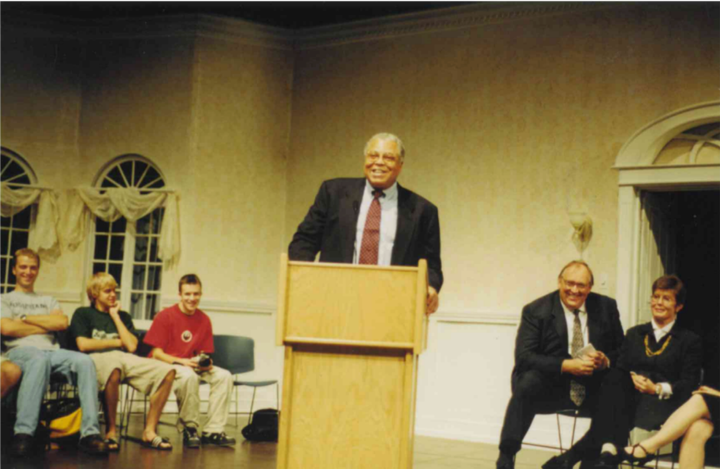Middle schoolers find ‘pathways’ to college

Project Pathways Program now in its second year at Augustana
ERIN MAIROSE
Sixteen students head into chemistry lab in the Froiland Science Complex. Their assignment for the afternoon is to help solve a crime scene by matching the suspect’s fingerprints and testing soil samples containing ammonia.
For most of these students, this is their first time in college. The students are eighth graders from Whittier Middle School in Sioux Falls and are part of a new initiative to help increase the number of underrepresented youth—especially Native Americans students—in higher education.
The Project Pathways Program is now in its second year at Augustana. It aims to introduce middle schoolers to college life.
This year’s student leaders junior Hope Maunders and senior Jasmin Fosheim planned three afternoon sessions inviting groups of middle schoolers to campus. They chose topics like forensic chemistry, performing and visual arts and biology, enlisting the help of faculty and student volunteers.
Although holding eighth graders’ attention for too long isn’t easy, “the more you’re exposed to something, the more you’re able to open your mind to it,” Maunders said.
Sophomore student volunteer Katelyn Stevens taught the eighth graders about soil determination at the fake crime scene, placing soil in basic solutions and allowing the different metals to react.
“To have our lab taken over for the day by middle schoolers was awesome and nerve-racking at the same time,” Stevens said. “There was a lot of explaining to do as to why they had to keep eye protection on while dealing with the chemicals.”
Chemistry professor Jetty Duffy-Matzner said she likes doing outreach events like Project Pathways to get kids excited about learning —especially about science.
“My primary goal was to get kids to recognize that learning isn’t uncool,” Duffy-Matzner said. “That learning is a pathway to success, and instead of worrying about being cool, to ask questions, drawing conclusions about what you see and using your brain.”
During another afternoon on campus, percussion professor John Pennington led a drum circle facilitation session. Pennington said he was “intrigued with the idea of working with people who hadn’t had access to higher education, and maybe that wasn’t even on the radar.”
For 45 minutes, the middle schoolers practiced drumming patterns while learning about how music fits into education. When the session was over, the students did printmaking in the art department, one of the activities Fosheim helped plan.
“The sense that I got from [Fosheim] was that part of it was to demystify higher education and make it not so intimidating —so just to converse and connect on a more personal level,” Pennington said.
Today’s finale of Project Pathways will include sessions focused on biology, including extracting DNA from bananas.
Though they may not impact every student, Maunders said she hopes the idea of higher education is more familiar when the eighth graders leave campus.
“Going to school pursuing [higher] education might be scary, and you might not know much about it or even how to do it or what to do, but at the same time there’s people here for them,” she said. “And just exposing them to what could be—that’s what really matters.”



